Question 1: 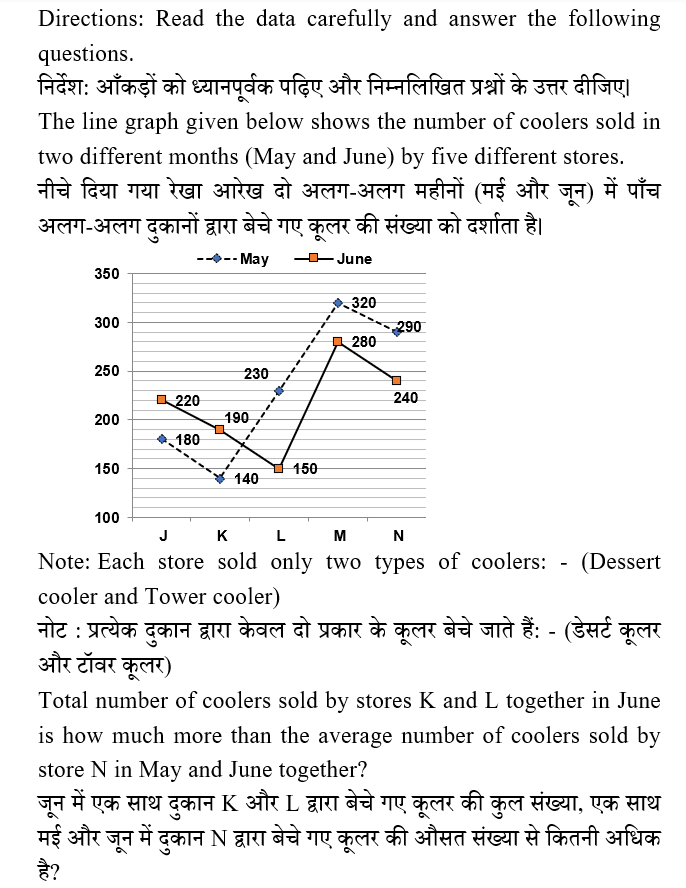
65
75
80
100
85

Question 2: 
None of these / इनमें से कोई नहीं
207
161
184
299
Average number of coolers sold by stores K and P together in both May and June = 395
Total number of coolers sold by stores K and P together in both the months = 395 × 2 = 790
Total number of coolers sold by store K in May and June together = 140 + 190 = 330
Therefore, total number of coolers sold by store P in May and June together = 790 - 330 = 460
Ratio of the number of coolers sold by store P in May to that in June = 13:7
Hence, number of coolers sold by store P in June
= (7/20) × 460 = 161
Question 3: 
13:5
7:5
13:8
13:7
7:4
Total number of coolers sold by Stores M and N together in June = 280 + 240 = 520
Total number of coolers sold by stores J and K together in May = 180 + 140 = 320
Hence, required ratio = 520:320 = 13:8
Question 4: 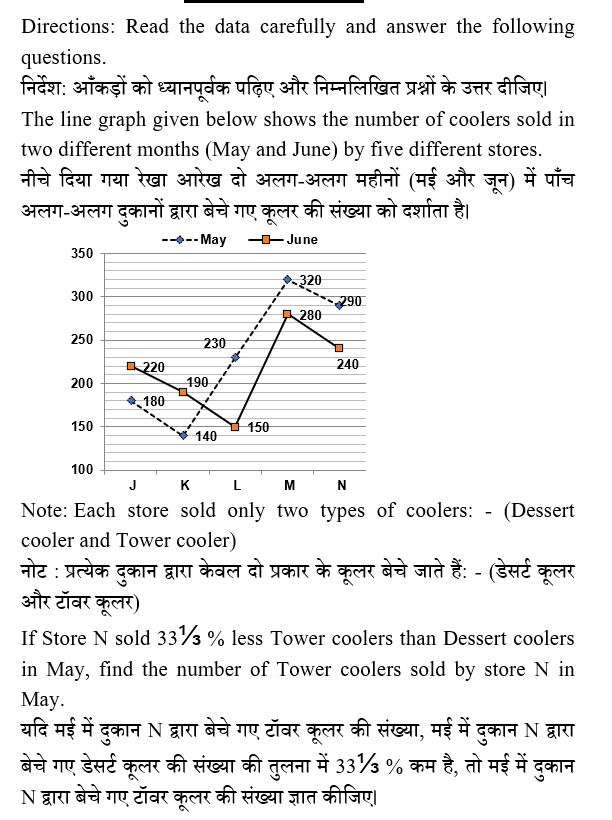
116
156
148
174
None of these / इनमें से कोई नहीं
Total number of coolers sold by store N in May
= 290
Let the number of Dessert coolers sold by store N in May be 3t
Then, number of Tower coolers sold by store N in May = (2/3) × 3t = 2t
According to the question:
=> 3t + 2t = 290
=> 5t = 290
=> t = 58
Hence, number of Tower coolers sold by store N in May = 2t = 2 × 58 = 116
Question 5: 
70
50
60
80
120
Total number of coolers sold by all the five stores together in May = 180 + 140 + 230 + 320 + 290
= 1160
Total number of coolers sold by all the five stores together in June = 220 + 190 + 150 + 280 + 240
= 1080
Hence, required difference = 1160 - 1080 = 80
Question 6: 
42%
38%
40%
36%
44%
Number of coolers sold by store N in May = 290
Total number of coolers sold by stores J and M together in June = 220 + 280 = 500
Hence, required percent = {(500 - 290)/500} × 100 = 42%
Question 7: 
200
150
240
180
120
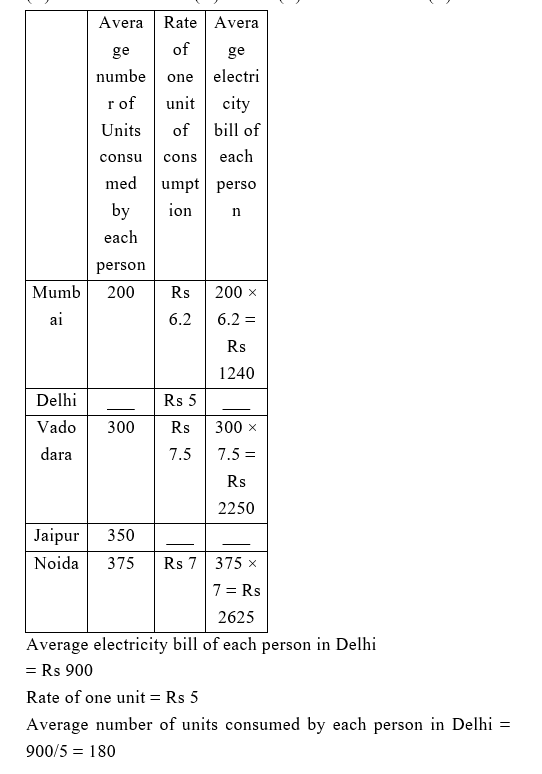
Question 8: 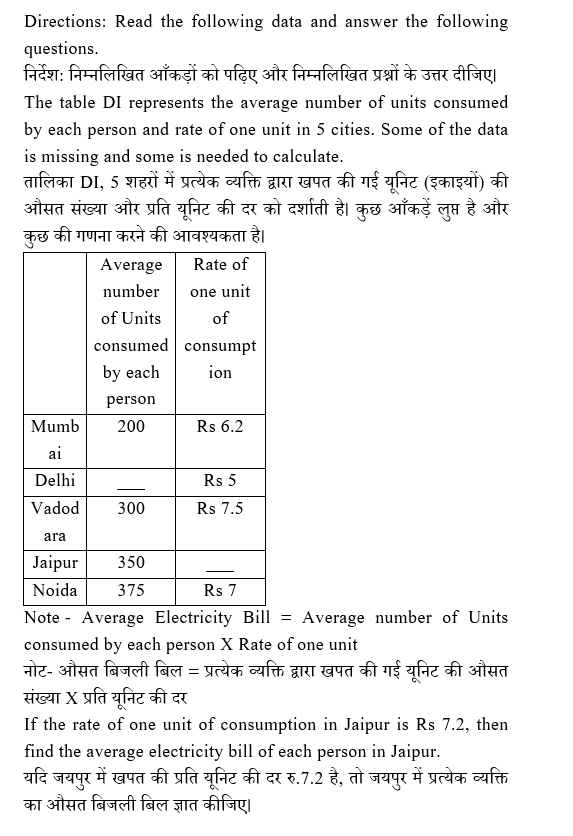
Rs 1800
Rs 1000
Rs 1250
Rs 2520
Rs 1540
Rate of one unit = Rs 7.2
Number of units consumed = 350
Average electricity bill of each person = 350×7.2
= Rs 2520
Question 9: 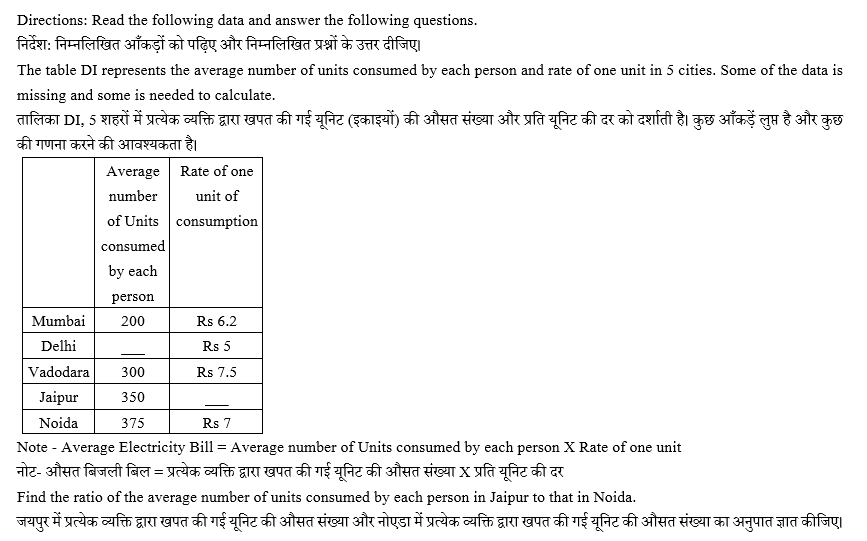
18: 25
3: 4
2: 5
14: 15
1: 2
Average number of units consumed in Jaipur = 350
Average number of units consumed in Noida = 375
Required ratio = 350: 375 = 14: 15
Question 10: 
40% more
33.3% less
25% more
12.5% more
10% less
Average number of units consumed by Mumbai
= 200
Average number of units consumed by Vadodara
= 300
Required percentage = ((300 - 200)×100)/300
= 33.3% less
